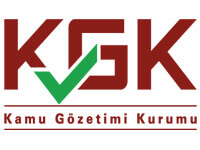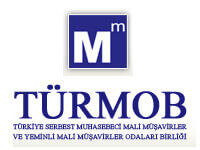 Dr. Koray Ateş
Dr. Koray Ateşkorayates@muhasebetr.com

Turkey-EU Trade After Customs Unıon Agreement
(Bu Makale İnternational Social Sciences Studies Journal adlı Uluslararası hakemli derginin Şubat 2020 sayısında yayımlanmıştır.)
ABSTRACT
Turkey, which wants to reach the level of modern civilization and take advantage of its opportunities, is the first country to become a member of the Customs Union without being a member of the EU and Turkey applied for a partnership with the EEC in 1959.
When the data on foreign trade were examined, the Customs Union process had an increasing effect on Turkey's total trade volume. When the foreign trade data between the European Union and Turkey is evaluated, it is determined that after the Customs Union Agreement, there is an asymmetric effect; and although Turkey's export figures to the EU have risen, there is a distribution in favor of importation. Since the implementation of the Customs Union agreement, Turkey's exports to the EU have increased rapidly compared to the EU imports. Import numbers from the EU, which was $24.349 billion at current US dollar prices in 1996, were 29.5% in 2002, 36.8% in 2003 and 36.8% in 2004, after a bumpy trend through 2004 has increased.
Keywords: Customs union, Foreign trade, EU, Turkey, Export and Import
1. Introduction
From the middle of the XX. century, countries that have been engaged in a rapid spread in the world have been involved in many economic integration efforts in order to protect themselves from an intensely competitive environment and not to miss the possibility of integration with the world. There have been significant changes in the world trading platform in the process while countries are trying to maintain their presence in a harsh global competitive environment are reorganizing their political approaches to foreign trade. They have tried to comply with their requirements. Especially, in the field of international trade, the idea of free trade has become particularly dominant and quotas and tariffs that impose restrictions on foreign trade have decreased slightly. After World War II, developed countries initiated the process of economic integration to enable multi-faceted equivalence in the field of world trade to bring vitality to foreign trade activities and some related organizations have been constituted. The Customs Union (CU) which is implemented between the European Union and EU member countries, is undoubtedly the most important of the organizations established in this manner. (Uyar, 2001: 10).
The European Union has become Turkey's largest trading partner as of the Customs Union and has reached a competitive level over the years. However, it is necessary to evaluate how much the positive/negative consequences of the effects of the Customs Union on Turkey's economy and trade as of today. Accordingly, commercial growth should be made sustainable by creating alternative trade diversity and integration formations. However, in this process, it is necessary to evaluate how the Customs Union affects Turkey's trade and economy.
Turkey has applied to the Community to become a full member without waiting for the time in the stipulated calendar by the Ankara Treaty in 1987. After 1980, the idea that Turkey's growth and development will be achieved by being a full member of the EEC as a result of the EU's positive approach to Turkey. The revival of frozen relations and the new foreign policy implementation in 1987, Turkey has applied to the EEC for full membership. As a result of the negotiations in 1989, Turkey was not yet ready for membership and the process was decided to postpone a little further. (Özer, 2009: 93).
There are many reasons why the EEC responded negatively to Turkey's full membership application in 1989. The primary reason for this is the EEC's decision that the community is not ready for a new expansion process. Turkey's Cyprus issue and political problems with Greece are the political reasons for rejecting Turkey's membership. Another reason has been that Turkey is not ready for unity in terms of social, political and economic aspects and should develop in some areas. As a result, it has been decided to continue relations within the scope of the partnership agreement, not on a membership basis. (Department of European Union, 2019).
In 1990, a commission formed by the EEC presented the Council with a co-operation plan package called the Matutes Package on its behalf. According to this plan, it is proposed that the Customs Union process was completed by 1995 and developed by restarting and intensifying political, financial, industrial and technical cooperation. Although the Council does not approve the package the Customs Union agreement with Turkey, the final step of the Customs Union process which they envisioned as 22 years, was reached in 1995. (Ministry of EU 1998 Regular Report,1998:5)
2. Customs Union Treaty Between Turkey and The EU
The preparation phase on the path to the Customs Union began with the Ankara Treaty in the first place and ended with the introduction of the Additional Protocol. The starting period of the transition phase of the Additional Protocol ended with the signing of the customs agreement in 1995. The agreement of the Customs Union is considered as the last period. (Ministry of Commerce, 30 Agust 2018)
The preparation period has ended and the conditions for the transition period have been determined with the Added Protocol signed on January 1, 1973. Accordingly, it is envisaged that the completion of the Customs Union by ensuring industrial products, agricultural products and free movement of persons between the parties. During this period, within the 12-22-year transition period, it was decided that Turkey should reduce its customs on the common tariff in industrial products imported from the community. (Tüyen, 2014: 8)
As a result of EEC-Turkey relations, which were moved in the 1990s, they received commitments between the parties to complete the Customs Union process by 1995. Following the Copenhagen and Maastricht agreements in Europe, there have been changes in the union's working methods, expansion characteristics, new laws, policies and steps have been taken towards political unity beyond economic union. In 1993, the decision taken by the partnership council with Turkey adopted the principle of establishing a customs union. In 1995, at the 36th Term Partnership Council meeting in Brussels, 1/95 The Council of Security Resolution was approved and decided to enter into force on 1 January 1996 (Yılmaz, 2008: 118). With this decision, the final phase of the Ankara Treaty has been reached.
The Association Council Decision (ACD) included the provisions expressed in the Ankara Treaty as well as other provisions. The Ankara Treaty stipulated that in addition to the abolition of all kinds of restrictions and taxes that would have prevented trade between the parties in advance, the parties would apply joint tariffs against third countries. However, ACD were reached to make the legislation in Turkey in accordance with EEC provisions of the legislation in Turkey, such as industrial and intellectual rights, competition law, right of ownership in addition to the provisions of the Ankara Treaty in 1995 (Department of European Union, 2019).
The Customs Union agreement which excludes agricultural and services policies from the scope of the agreement, has been agreed on the trade of industrial goods. With the Customs Union agreement entered into force in 1996, barriers, quotas and taxes were abolished and prevented from re-establishing industrial products.
The Customs Union process began for Turkey in 1996 but in some of the products imposed higher tariffs than the amount of common tariffs in commercial activity with third countries until the end of 2000. In 2001, the common tariff system was applied to all products without exception in trade with third countries. In addition, Turkey has ensured that this system is settled in foreign trade by complying with the Generalized Preferences System which includes the concessional tariff system that the EU is implementing against developing and underdeveloped countries (Doğan and Kaya, 2011: 2).
In the history of relations with the EU, the Customs Union process for Turkey is a turning point. Turkey which is believed to have been a member of the Customs Union, has continued the process of customs union despite many economic and political obstacles for years and expressed its main goal by applying for full membership in 1987. After that, a large speed was gained in the process of the Customs Union, after the trade regulations and policies reached the customs union agreement with ACD in 1995 (Doğan, 2004: 3).
3. Turkey and EU Trade After Customs Union Agreement
The European Union which is the most important economic and political organization in the world, consists of 28 member states. The world's overall population is roughly 7% but the EU is one of the largest economies and trade actors in the world. Besides, the large and very diverse market structure, the advanced infrastructure facilities it owns, the health measures implemented in the same way in all member states, technical standards, the current large market and the trade it will reach in the future with its potential, the EU is a very important market in terms of Turkey's trade relations.
The EU remains one of the largest economies in the world with consumer capacity of up to 510 million and revenue of $33,715 per capita. The EU's Gross Domestic Product (GDP) figures are reaching $17.3 trillion and it takes a share of the world economy by about 21%. It is located behind the United States, which has a $19.4 trillion GDP and ahead of China which has a $12.2 trillion GDP. (Ministry of Commerce, 2019).
When considered as a single block, the EU ranks are second in the world's export and import ranking with a share of 15.2% in world overall goods exports and 14.7% in the world's overall imports. In the field of trade related to the service sector, the EU has the title of being the world's largest exporter and importer with trade surplus of $209 billion. (Ministry of Commerce, 2019).
With a highly diversified and deep market structure, the EU imports investment-oriented goods, chemical products and various consumer goods as well as main products such as energy, raw materials and agricultural products offer many opportunities to the Turkish exporters. The EU which has an import volume of up to $2.1 trillion, increases the volume of imports in many sectors every day. The sectors mentioned with the large import capacity are also offering the Turkish exporter the opportunity to reach a large market.
With a direct international investment of $303 billion in its region in 2017, the EU is the most directly internationally invested unit in the world. With a wide consumer base with transparent and open market structure, less trade and more understandable regulatory structure, the EU has a high capacity for passenger and freight transportation on the same hand with very few transport and transport infrastructures facilities and services in a safe environment and with the least problems (Ministry of Commerce, 2019).
With involvement in the Customs Union on January 1 1996, the volume of trade reached a great level between Turkey and the EU reached a level of $165 billion in 2018 and the EU remained Turkey's most important trading partner. Turkey, with 4% of the EU's taken his share of the total exports in this area ranks 5th. (Ministry of Commerce, 2019). With the Customs Union agreement, a serious competition has begun between Small and Medium Sized Enterprises (SME) operating in Turkey. This competition is the most important reason for the increase in exports to Europe. (Giray, 2009:119).
In 2018, the EU had 50% of Turkey's exports of $84 billion and with this share it ranked first in Turkey's total exports. In the EU's import total, Turkey is ranked 6th with a 4% share. However, the EU is first rank in Turkey's exports as well as imports. Given the figures provided in 2018; It will be seen that Turkey has carried out a portion of the total import figures of $223 billion, up from $81 billion, its 36.3% share from the EU. In 2018, Turkey's trade activities with the EU, the ratio of meeting imports of exports was 103.7%. (Ministry of Commerce, 2019)
The importance of the EU, a giant market where Turkey is no stranger and if the scope of Customs Union applications which are limited only to industrial and processed agricultural products, are updated by expanding and deepening in the coming periods. it is anticipated to increase thoroughly.
3.1. Turkey's Exports to The EU Transition to CU and After (1996-2018)
After the Customs Union, Turkey's export numbers with the EU increased gradually since 1996 and reached the export value of 12.590 billion USD in 1996 to USD 48.149 billion a decade later. It is almost quadrupled. The figure is seen in Table 1, which is USD 83.956 billion in 2018.
Table 1. The Process of Turkey's EU Export Value After The Customs Union
|
Period |
Export (Million USD) |
|||
|
Export Value of EU |
Change Compared To The Previous Period (%) |
General Export Value |
Share in Overall Export (%) |
|
|
1996 |
12.590 |
- |
23.224 |
54,2 |
|
1997 |
13.471 |
7,0 |
26.261 |
51,3 |
|
1998 |
14.837 |
10,1 |
26.974 |
55,0 |
|
1999 |
15.454 |
4,2 |
26.587 |
58,1 |
|
2000 |
15.688 |
1,5 |
27.775 |
56,5 |
|
2001 |
17.576 |
12,0 |
31.334 |
56,1 |
|
2002 |
20.458 |
16,4 |
36.059 |
56,7 |
|
2003 |
27.479 |
34,3 |
47.253 |
58,2 |
|
2004 |
36.699 |
33,6 |
63.167 |
58,1 |
|
2005 |
41.533 |
13,2 |
73.476 |
56,5 |
|
2006 |
48.149 |
15,9 |
85.535 |
56,3 |
|
2007 |
60.754 |
26,2 |
107.272 |
56,6 |
|
2008 |
63.719 |
4,9 |
132.027 |
48,3 |
|
2009 |
47.228 |
-25,9 |
102.143 |
46,2 |
|
2010 |
52.934 |
12,1 |
113.883 |
46,5 |
|
2011 |
62.589 |
18,2 |
134.907 |
46,4 |
|
2012 |
59.398 |
-5,1 |
152.462 |
39,0 |
|
2013 |
63.034 |
6,1 |
151.803 |
41,5 |
|
2014 |
68.514 |
8,7 |
157.610 |
43,5 |
|
2015 |
63.998 |
-6,6 |
143.839 |
44,5 |
|
2016 |
68.366 |
6,8 |
142.530 |
48,0 |
|
2017 |
73.906 |
8,1 |
156.993 |
47,1 |
|
2018 |
83.956 |
13,6 |
167.924 |
50,0 |
Reference: Ministry of Commerce
After Turkey joined the Customs Union, the Russian crisis, the Asian crisis and the earthquake disaster negatively affected export performance in 1998-1999 with the pace of economic growth. As a matter of fact, in 1999, the annual export value increase with the EU increased by 4.2%. In 2000, it was 1.5%, falling behind the average of other years. The economic crisis that began in the United States in 2008 and spread rapidly to the world every day; the capitalist economic system has become a deep problem of integrated economies and the globalization process. The impact of this crisis was reflected in Turkey's EU exports in 2009. For example, 26.2% in exports in 2007, 12.1% in 2010 and 18.2% in 2011, while in 2009 it was the scene of a major decline and was -25.9%. Exports with the EU which was $12.590 billion in 1996, increased to $15.454 billion in 1999. Significant jumps in this export process occurred in 2003 and 2018 years and respectively ratios were 34.3% and 33.6%. After that, it increased by 18.2% in 2011 and finally it increased by 13.6% in 2018.
Given in Table 1, considering Turkey's EU Export values in the period after the Customs Union, the share of these trade relations in general exports was around 50%. In the process, this share reached its highest level of 53% in 2003; In 2012, it remained at its lowest level at 39%.
3.2. Turkey's Imports to the EU After the Transition to The Customs Union (1996-2018)
In 1996, imports from the EU, which was $24.349 billion at current US dollar prices, were 29.5% in 2002 and 36.8% in 2003, after a bumpy outlook until 2004. In 2004, it also saw a record increase of 36.8%. The most dramatic decreases in the import item of foreign trade with the EU between 1996 and 2018 were -30.5% in 2001, -24% in 2009 and -11.4% in 2015.
Taking into account Turkey's EU Import Values in the process after the Customs Union issued in Table 2, the share of these trade relations in general imports was just over 40%. In the process, this share was at 55% between 1996 and 2000 but it began to fall since 2000 and this decline continued until 2018. The share of imports from the EU in general imports fell to lowest level in 2018 at 36.2%.
Table 2. The Process of Turkey's EU Import Value After The Customs Union
|
Period |
Import (Million USD) |
|||
|
Import Value of EU |
Change Compared To The Previous Period (%) |
General Import Value |
Share in Overall Import (%) |
|
|
1996 |
24.349 |
- |
43.627 |
55,8 |
|
1997 |
26.128 |
7,3 |
48.559 |
53,8 |
|
1998 |
25.297 |
-3,2 |
45.921 |
55,1 |
|
1999 |
22.538 |
-10,9 |
40.671 |
55,4 |
|
2000 |
28.552 |
26,7 |
54.503 |
52,4 |
|
2001 |
19.841 |
-30,5 |
41.399 |
47,9 |
|
2002 |
25.698 |
29,5 |
51.554 |
49,8 |
|
2003 |
35.157 |
36,8 |
69.340 |
50,7 |
|
2004 |
48.131 |
36,9 |
97.540 |
49,3 |
|
2005 |
52.781 |
9,7 |
116.774 |
45,2 |
|
2006 |
59.448 |
12,6 |
139.576 |
42,6 |
|
2007 |
68.472 |
15,2 |
170.063 |
40,3 |
|
2008 |
74.513 |
8,8 |
201.964 |
36,9 |
|
2009 |
56.616 |
-24,0 |
140.928 |
40,2 |
|
2010 |
72.391 |
27,9 |
185.544 |
39,0 |
|
2011 |
91.439 |
26,3 |
240.842 |
38,0 |
|
2012 |
87.657 |
-4,1 |
236.545 |
37,1 |
|
2013 |
92.445 |
5,5 |
251.661 |
36,7 |
|
2014 |
88.784 |
-4,0 |
242.177 |
36,7 |
|
2015 |
78.700 |
-11,4 |
207.234 |
38,0 |
|
2016 |
77.501 |
-1,5 |
198.618 |
39,0 |
|
2017 |
85.205 |
9,9 |
233.800 |
36,4 |
|
2018 |
80.813 |
-5,2 |
223.047 |
36,2 |
Reference: Ministry of Commerce
3.3. Turkey's Foreign Trade Balance with the EU After CU (1996-2018)
Turkey's economy has generally given a foreign trade deficit in foreign trade relations with the EU. The year in which the deficit was highest was 2013 with a deficit of US$ 29.4 billion. The EU's foreign trade deficit which has been around US$11 billion since 1996, increased by more than 100% in 2010 and in 2011 it grew open an increase of 50%. In this process, Turkey has not only given open foreign trade in 2017.
Table 3. Turkey's Foreign Trade Balance with the EU in the process after the Customs Union
|
Period |
Balance of Trade (Million USD) |
|||||
|
EU Export Valeu |
EU Import Value |
EU Balance of Trade |
Change Compared To The Previous Period (%) |
General Balance of Trade |
Change Compared To The Previous Period (General) (%) |
|
|
1996 |
12.590 |
24.349 |
-11.759 |
- |
-20.402 |
- |
|
1997 |
13.471 |
26.128 |
-12.657 |
7,6 |
-22.298 |
9,3 |
|
1998 |
14.837 |
25.297 |
-10.460 |
-17,4 |
-18.947 |
-15,0 |
|
1999 |
15.454 |
22.538 |
-7.084 |
-32,3 |
-14.084 |
-25,7 |
|
2000 |
15.688 |
28.552 |
-12.864 |
81,6 |
-26.728 |
89,8 |
|
2001 |
17.576 |
19.841 |
-2.265 |
-82,4 |
-10.065 |
-62,3 |
|
2002 |
20.458 |
25.698 |
-5.240 |
131,3 |
-15.495 |
53,9 |
|
2003 |
27.479 |
35.157 |
-7.677 |
46,5 |
-22.087 |
42,5 |
|
2004 |
36.699 |
48.131 |
-11.432 |
48,9 |
-34.373 |
55,6 |
|
2005 |
41.533 |
52.781 |
-11.248 |
-1,6 |
-43.298 |
26,0 |
|
2006 |
48.149 |
59.448 |
-11.299 |
0,4 |
-54.041 |
24,8 |
|
2007 |
60.754 |
68.472 |
-7.718 |
-31,7 |
-62.791 |
16,2 |
|
2008 |
63.719 |
74.513 |
-10.794 |
39,9 |
-69.936 |
11,4 |
|
2009 |
47.228 |
56.616 |
-9.388 |
-13,0 |
-38.786 |
-44,5 |
|
2010 |
52.934 |
72.391 |
-19.457 |
107,2 |
-71.661 |
84,8 |
|
2011 |
62.589 |
91.439 |
-28.850 |
48,3 |
-105.935 |
47,8 |
|
2012 |
59.398 |
87.657 |
-28.259 |
-2,0 |
-84.083 |
-20,6 |
|
2013 |
63.034 |
92.445 |
-29.411 |
4,1 |
-99.859 |
18,8 |
|
2014 |
68.514 |
88.784 |
-20.269 |
-31,1 |
-84.567 |
-15,3 |
|
2015 |
63.998 |
78.700 |
-14.702 |
27,5 |
-63.395 |
-25,0 |
|
2016 |
68.366 |
77.501 |
-9.136 |
-37,9 |
-56.089 |
-11,5 |
|
2017 |
73.906 |
85.205 |
-11.299 |
23,7 |
-76.807 |
36,9 |
|
2018 |
83.956 |
80.813 |
3.143 |
-127,8 |
-55.123 |
-28,2 |
Reference: Ministry of Commerce
There have been additional expenses and tax losses that financial effects on the Customs Union's bringing to the Turkish economy. Additional expenses arising from the increases in public expenditures stem from the expenditures made during the harmonization process with the Customs Union. Tax losses are due to the abolition of customs duties and other peer-to-peer taxes from imported products and the EU's process of complying with the Common Trade Policy.
The decision of the Customs Union was the most remarkable development affecting the entire economic structure after Turkey's economy preferred the liberal economy in the 1980’s. The Customs Union, which came into force on January 1, 1996, has caused several changes to Turkish trade legislation and competition legislation policies and created new opportunities for the Turkish economy. The Customs Union is the largest comprehensive commercial structure in which Turkey is a party within the scope of its external growth policy. There are many factors in Turkey's economy that have an impact on macroeconomic balances and foreign relations; therefore, it is not easy to distinguish the influence of the Customs Union from other influences and to reach certain judgments in the developments.
4.Conclusion
Turkey is the first country to be a member of the Customs Union without being a member of the EU. There is no point in maintaining the Customs Union like this without being a full member of the community. Some categories of goods are free-roaming but some other goods are not covered, some of the commercial goods are not allowed to free movement individuals who will sell or market such goods while free movement situations lead to negative thoughts about the Customs Union. The idea that EU countries can create a marketplace where they can open up for sale and circulation by freely entering the Turkish market with the facilities provided by the Customs Union is the main reason for negative approaches to this issue. Moreover, Turkey's inability to make agreements with third countries outside the EU has a negative impact on international trade.
When the data on foreign trade are examined, it would be right to say that the Customs Union process has an increasing effect on Turkey's total trade volume. Turkey's foreign trade relations have always had a very important role in the EU and the rate has shown a rising momentum after the Customs Union agreement. After the Customs Union, it reached over 50%. When the foreign trade data between the European Union and Turkey is evaluated, it is determined that after the Customs Union Agreement, there is an asymmetric effect; and although Turkey's export figures to the EU have risen, there is a distribution in favor of importation. As of 1971, Turkey has the right to enter the EU market without customs with industrial products with some exceptions being left aside; the fact that the EU obtained it in 1996 is the main reason for this.
Since the implementation of the Customs Union agreement, Turkey's exports to the EU have increased rapidly compared to the EU imports. After the Customs Union, Turkey's export numbers with the EU increased gradually since 1996 and reached the export value of 12.590 billion USD in 1996 to USD 48.149 billion a decade later. It is almost quadrupled. The figure is estimated at USD 83.956 billion in 2018.
In 1996, imports from the EU, which was $24.349 billion at current US dollar prices, were 29.5% in 2002 and 36.8% in 2003, after a bumpy outlook until 2004. In 2004, it also saw a record increase of 36.8%.
The most dramatic declines in the import item of foreign trade with the EU between 1996 and 2018; It was -30.5% in 2001, -24% in 2009 and -11.4% in 2015. Turkey's economy has generally given a foreign trade deficit in foreign trade relations with the EU. The year in which the deficit was highest was 2013 with a deficit of US$ 29.4 billion. The EU and its foreign trade deficit which has been around US$11 billion since 1996, increased by more than 100% in 2010 and in 2011 it grew open an increase of 50%. In this process, Turkey has not only given open foreign trade in 2017.
REFERENCES
AB Bakanlığı, (1998). 1998 Düzenli Raporu, https://www.ab.gov.tr/files/AB_Iliskileri/AdaylikSureci/IlerlemeRaporlari/Turkiye_Ilerleme_Rap_1998.pdf, (Accessed: 15.12.2019).
Avrupa Birliği Başkanlığı, (23/07/2019). Türkiye-AB İlişkilerinin Tarihçesi, https://www.ab.gov.tr/turkiye-ab-iliskilerinin-tarihcesi_111.html, (Accessed: 15.12.2019).
Doğan, N. (2004). On Yıllık Dönemde Gümrük Birliğinin Etkileri ve Sonuçları Üzerine Bir Değerlendirme. Mevzuat Dergisi, 79, 1-12.
Doğan, S. ve Kaya, S. S. (2011). Gümrük Birliği Sonrasında(1996-2009) Türkiye’nin Avrupa Birliği ile Dış Ticaretinin Ülke ve Fasıl Bazlı Yoğunlaşma Analizi. İstanbul Üniversitesi İktisat Fakültesi Ekonometri ve İstatistik Dergisi, 14, 1-18.
Giray, F.(2009). Küreselleşme Sürecinde Küçük Orta Büyüklükteki İşletmeler ve Vergi Teşvikleri: Türkiye’deki Durum Analizi. Vergi Dünyası Dergisi, 338, 111-124
Özer, M. A. (2009). Avrupa Birliği’ne Tam Üyeliğin Eşiğinde Türkiye. Celal Bayar Üniversitesi İİBF Yönetim ve Ekonomi Dergisi, 16(1), 89-105.
Ticaret Bakanlığı, (30 Ağustos 2018). Türkiye-AB Ortaklık İlişkisinin Kurulması, Ankara Anlaşması ve Katma Protokol, https://ticaret.gov.tr/dis-iliskiler/avrupa-birligi/turkiye-ab-ortaklik-iliskisinin-kurulmasi-ankara-anlasmasi-ve-katma-protokol, (Accessed: 12.12.2019).
Ticaret Bakanlığı, Avrupa Birliği İle Dış Ticaret, http://risk.gtb.gov.tr/data/572b3a8a1a79f50cd8a22b1a/11-Avrupa%20Birli%C4%9Fi%20ile%20Dis%20Ticaret.pdf, (Accessed: 12.12.2019).
Tüyen, Z. (2014). Gümrük Birliğinin Türk Ekonomisine Etkileri. Yaklaşım Dergisi. 264,1-20
Uyar, S., “Gümrük Birliği’nin Türkiye Ekonomisi Üzerindeki Etkileri”, Dış Ticaret Dergisi, S. 20, s. 43-51.
Yılmaz, T. (1985), Teoride ve Uygulamada Ekonomik Entegrasyon, Can Matbaa, İstanbul.
10.04.2020
Kaynak: www.MuhasebeTR.com
(Bu makale kaynak göstermeden yayınlanamaz. Kaynak gösterilse dahi, makale aktif link verilerek yayınlanabilir. Kaynak göstermeden ve aktif link vermeden yayınlayanlar hakkında yasal işlem yapılacaktır.)
>> Duyurulardan haberdar olmak için E-Posta Listemize kayıt olun.
>> SGK Teşvikleri (150 Sayfa) Ücretsiz E-Kitap: hemen indir.
>> MuhasebeTR mobil uygulamasını Apple Store 'dan hemen indir.
>> MuhasebeTR mobil uygulamasını Google Play 'den hemen indir.
>> YILIN KAMPANYASI: Muhasebecilere Özel Web Sitesi 1.279 TL + KDV Ayrıntılar için tıklayın.





 YMM Adem Sumer
YMM Adem Sumer






 MUHASEBECİNİN BAŞUCU REHBERİ KİTABI
MUHASEBECİNİN BAŞUCU REHBERİ KİTABI Asgari Ücret 2026 - Asgari Ücret Ne Kadar?
Asgari Ücret 2026 - Asgari Ücret Ne Kadar?
 Vergi Dilimleri 2026
Vergi Dilimleri 2026
 Kamu Gözetimi, Muhasebe ve Denetim Standartları Kurulunun 29/12/2025 Tarihli ve 75935942-050.01.04-[01/38543] Sayılı Kararı
Kamu Gözetimi, Muhasebe ve Denetim Standartları Kurulunun 29/12/2025 Tarihli ve 75935942-050.01.04-[01/38543] Sayılı Kararı
 Vergi Daireleri Kuruluş ve Görev Yönetmeliği
Vergi Daireleri Kuruluş ve Görev Yönetmeliği
 E-Fatura ve E-Arşiv Fatura Uygulamasına Dahil Olmayan Mükelleflerin GİB Portalından E-Arşiv Fatura Düzenleme Zorunluluğu, Basit Usul ve İşletme Hesabındaki Mükellefler İçin Yeniden Düzenlendi
E-Fatura ve E-Arşiv Fatura Uygulamasına Dahil Olmayan Mükelleflerin GİB Portalından E-Arşiv Fatura Düzenleme Zorunluluğu, Basit Usul ve İşletme Hesabındaki Mükellefler İçin Yeniden Düzenlendi
 2026 Yılı Gelir Vergisi Dilimleri
2026 Yılı Gelir Vergisi Dilimleri
 2026 Yılı Fatura Kesme ve Düzenleme Sınırı
2026 Yılı Fatura Kesme ve Düzenleme Sınırı
 Yılın Kampanyası: Muhasebecilere Özel Web Sitesi 1.279 TL + KDV
Yılın Kampanyası: Muhasebecilere Özel Web Sitesi 1.279 TL + KDV
